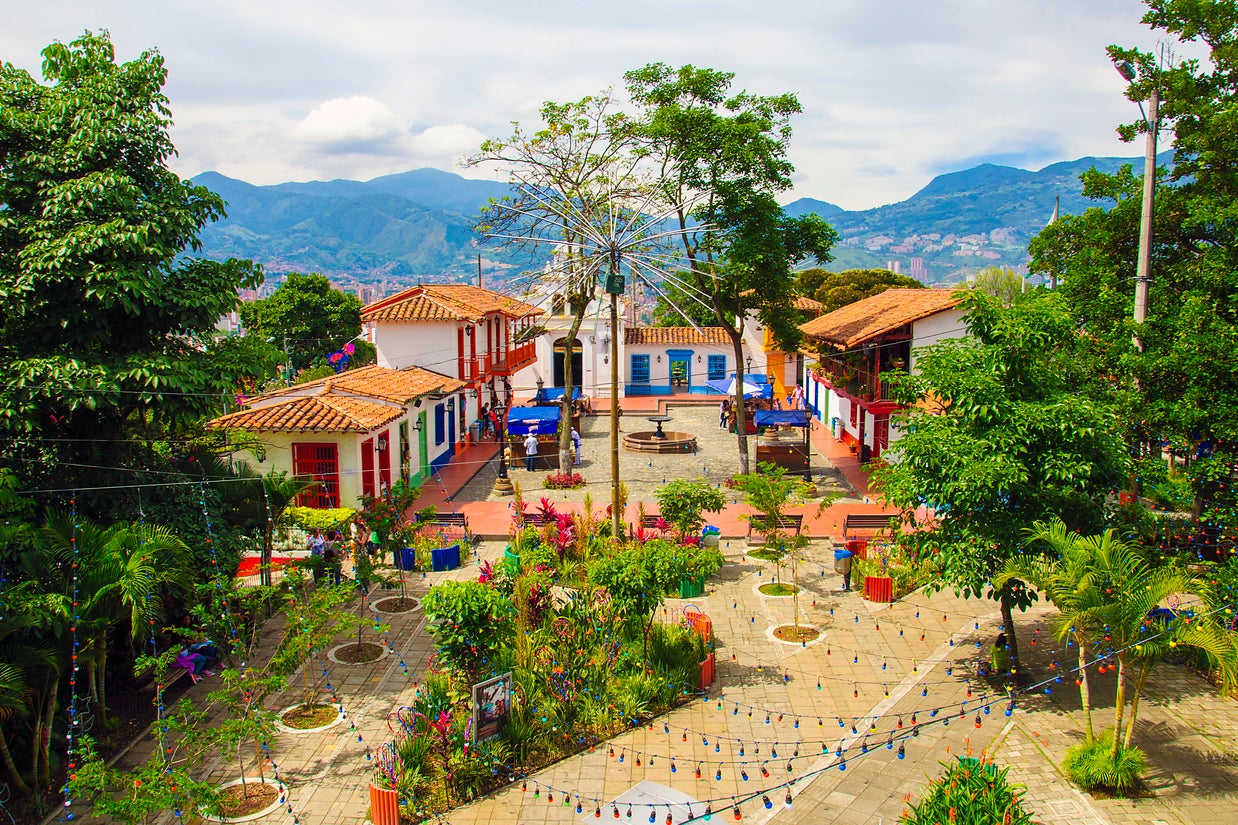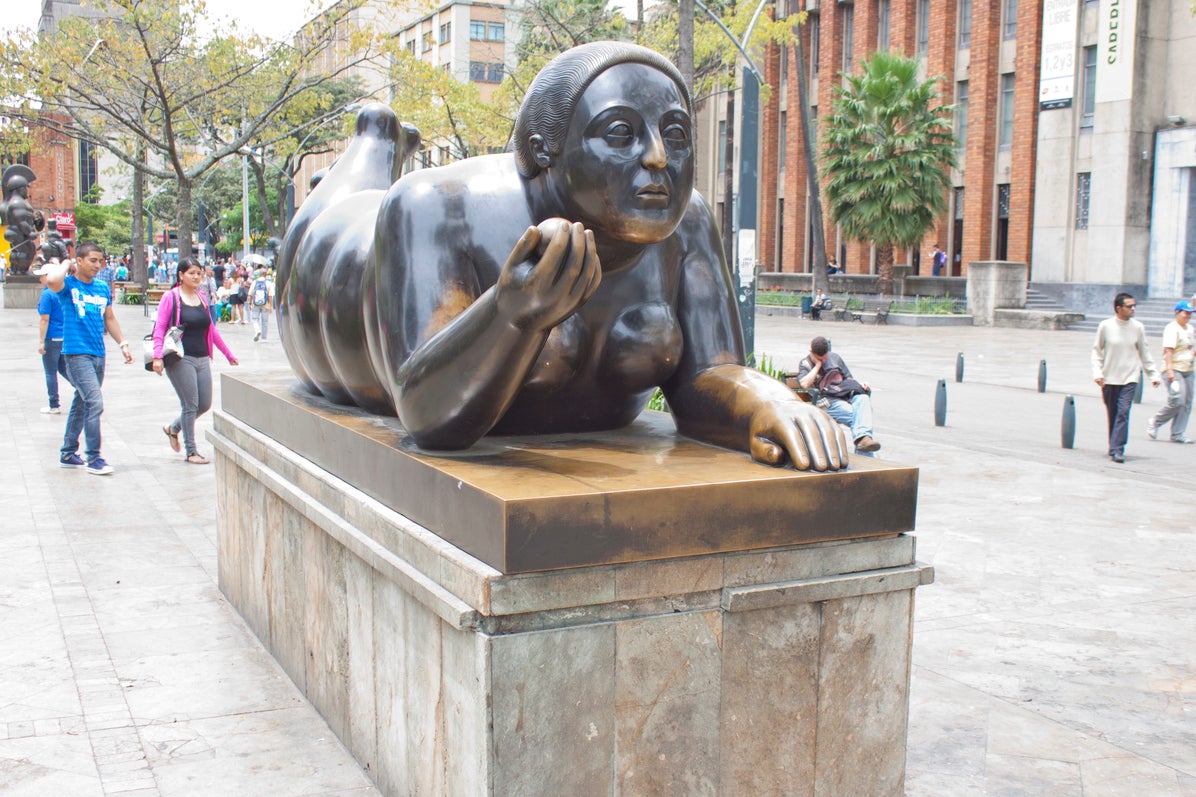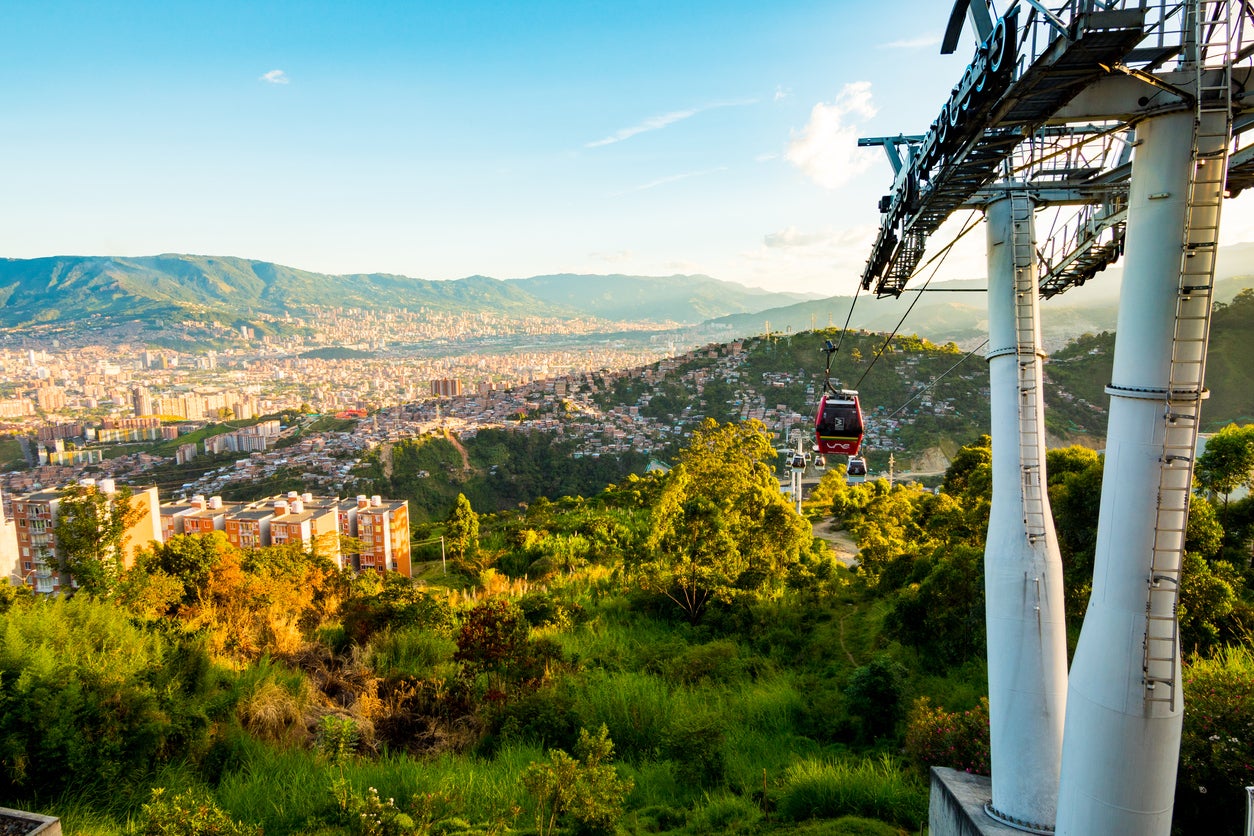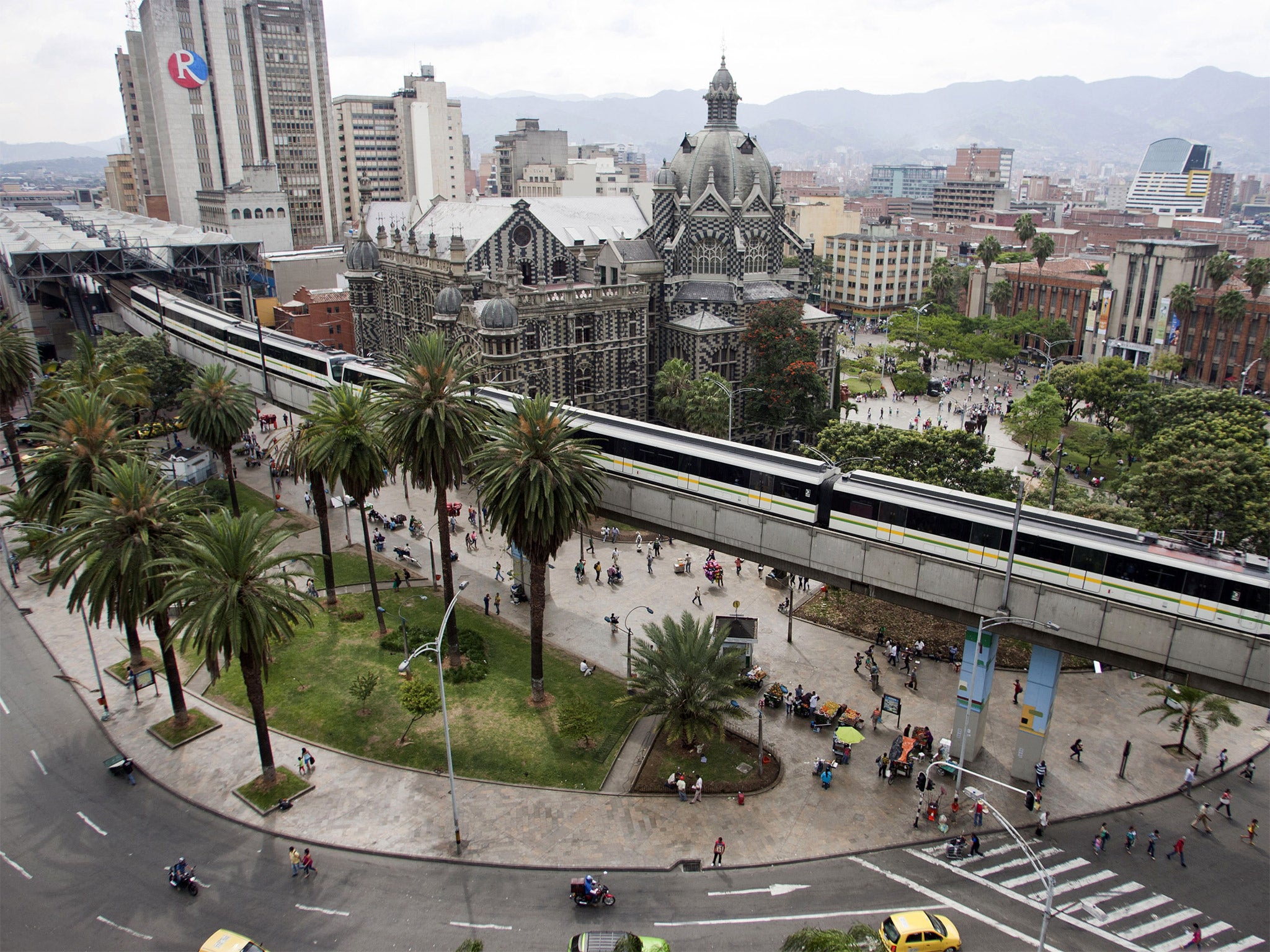Narcos: How Medellin got a cultural makeover and left its drug-tarnished past behind
The setting for the Netflix drama inspired by Pablo Escobar couldn’t be more different from its former incarnation

If ever a city had a sense of humour, Medellin does. Stroll around Plaza Botero, where sculptures of well-upholstered women and bulky men loom in their ample glory, and you have to smile.
They were given to the Colombian city by the country’s favourite sculptor Fernando Botero, who said, “Art should be a place of refuge from the hardness of life,” and they stand in cheerful, defiant contrast to a time when life was impossibly hard. It was here that Pablo Escobar ran his drugs empire and although his malign influence ended in a hail of bullets in 1993, his memory is perpetuated today by Netflix with the release of another series of Narcos, the gripping drama inspired by his life.

How far removed that image is from the reality. An audacious regeneration plan has transformed Medellin into a city that seems at ease with itself – open and sociable.
Central to change has been the Museum of Modern Art (MAMM), which was fashioned out of a redundant steel works about 10 years ago and now shows the best of Colombia’s burgeoning contemporary art scene as well as housing a ballet company and a concert hall. At the same time libraries and schools have sprung up; parks and friendly, unthreatening pedestrian streets have opened. A metro was built along the spine of the city and connects with cable cars that rise from the valley into the barrios. The aim was to bring the poorer districts nearer the centre but, with a pass for all public transport costing less than £1 a day, it means parts of the city have been opened up for tourists, too. One barrio, Communa 13, is offering graffiti tours – unimaginable 15 years ago.
The cable car leaves the city behind and sways on over empty countryside for 15 minutes to Parque Arvi, 16,000 hectares of gentle jungle teeming with butterflies and birds. The temperature in Medellin is always spring-like, so this makes a delightful place to stroll or simply relax in one of the many restaurants or around the plethora of food vans.
It is a relief from the city centre’s old quarter, dominated by the rather stolid adobe brick cathedral, which is a hubbub of crowded streets, heaving with vendors selling anything from fruit juice to Sim cards. Only the Botanical Garden with its egrets and iguanas, not to mention an elegant restaurant, the In Situ, provides respite.
Above all Medellin is a city of festivals. A fashion week in June might be too specialist for tourists but the flowering of design and style that it inspires can be found in the dinky boutiques and cafés on the Via Primavera in the El Poblado district.

In July there is an international tango festival, but the most fun can be had each month when a street is set aside in the Manique district for professionals and amateurs alike to strut their stuff. The most spectacular event is the flower festival in August, in which the highlight is the parade of the Silleteros who carry up to 70kg of blooms on their backs in an exuberant display, an ironic nod to the days when slaves had to ferry the rich on their backs on a silleta, or saddle.
Medellin does not have a colonial centre like the capital Bogota or Cartagena on the coast, but the Pueblito Paisa, a replica of a traditional village, though slightly kitschy, is a pretty spot with its church, bars and cafés and is worth visiting at dusk when you can sit watch the city lights as day turns to dusk.
El Poblado, the oldest part of the city, is where many of the smartest hotels are located, such as Park Hotel 10, off Calle 36, or the Hotel Diez, Calle 10. The Art Hotel, all exposed brick and abstract paintings, has a wine bar which is popular with the locals, who throng to Parque Lleras, a grid of streets crowded with restaurants – from Tex Mex and Irish pubs to more traditional haunts. It’s lively but a tad honky-tonk.

For the best restaurants, take the advice of a local, Maria Mercedes Gonzales, the director of MAMM. She goes for Ajiacos y Mondongos in El Poblado which serves only three main dishes: ajiacos (a soup of chicken, potatoes and corn), bean casserole and tripe. Nearby Osea has only six tables, but a sophisticated menu which might include fish with dates, orange, pistachios and a rice arepa (a sort of maize patty) or chicken with watermelon, mint and curry.
She suggests heading south to the Envigado district for Lucio Carbon y Vino which is well known for its steaks; for something more traditional try Hato Viejo, The Old Farmstead, high above the city. It specialises in bandeja paisa, a mighty plateful of chicheron, avocado, minced meat, plantain and beans, which was the food the farmhands took with them to the fields and is a reminder that though Medellin is now one of South America’s most progressive – and engaging – cities, it has not lost a sense of its past. The part without Pablo Escobar in, at any rate.
Travel essentials
Journey Latin America (020 8747 8315; journeylatinamerica.co.uk) offers a Chachalaca tour which takes in Medellin, Bogota, Cartagena and Villa de Leyva. A 14-day trip costs from £3,745 per person.
Join our commenting forum
Join thought-provoking conversations, follow other Independent readers and see their replies
Comments